#humanoid snake
Photo
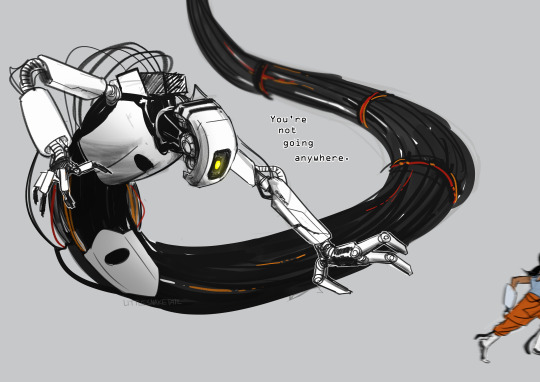
Less humanoid GLaDOS partially inspired by that beta design with arms
EDIT: Quite a few people have pointed this out to me without reading the tags so here it is: When I say ‘less humanoid’, I mean less so than most ‘android’/’humanoid’ designs, not her original design.
#portal 2#glados#chell#portal 2 fanart#portal#portal fanart#robot#snake's art#NOT 'less humanoid than her canon form'
16K notes
·
View notes
Text

red&white baron 🍷
#monster#humanoid#art#my art#fish#adopt#anthro#kinda mix of betta fish snake and sea bun iloovmishmashin
164 notes
·
View notes
Text

Cora was very overdue for a reference. My angry fire serpent 🔥🔥🔥
And technically my oldest oc! She's been around for over a decade.
#serpent#drake#snake#dragon#shapeshifter#fire dragon#elemental#oc#humanoid#original character#character sheet#oc ref#digital art#artists on tumblr#art#my art#personal art#Cora#ARCARDIA
117 notes
·
View notes
Text
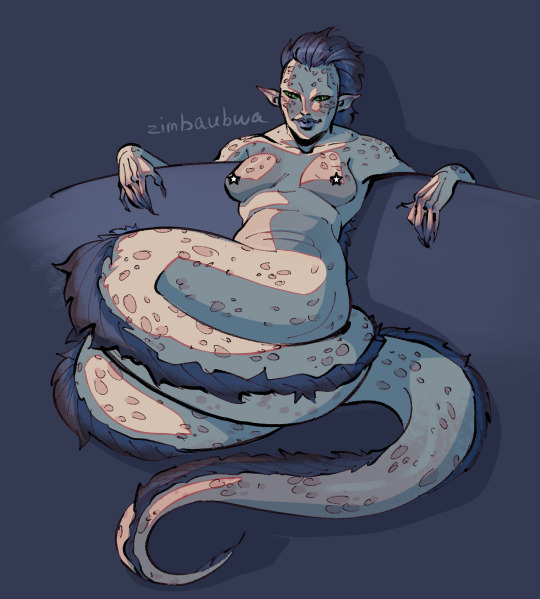
Lamia
trying to sketch something regularly without much thinking to stay in shape
#digital art#artists on tumblr#digital arwork#original art#original work#dnd art#oc art tag#lamia#naga#humanoid#fantasy art#fantasy world#fantasy#fantasy character#fantasy creature#snake#snake girl#half human#commissions open
102 notes
·
View notes
Text

[Image above: Gobajo statue with a crown of elephant, the largest animal on land, on its head. One of the Eight Legions.]
Legends of the humanoids
Reptilian humanoids (10)
The Eight Great Dragon Kings – Dragon tribes who listened to the Buddha's teachings.
They are the eight kings of the dragon races, who belong to the Eight Legions of Buddhist dieties. They protect the Buddha Dharma.
In Buddhism, Nagaraja (lit. 'king of the nagas') in Hindu mythology was incorporated as various dragon deities, including the Eight Great Dragon Kings.
Nagarajas are supernatural beings who are kings of the various races of Nagas, the divine or semi-divine, half-human, half-serpent beings that reside in the netherworld (Patala), and can occasionally take human form. The duties of the Nāga Kings included leading the nagas in protecting the Buddha, other enlightened beings, as well as protecting the Buddha Dharma.
Some of the most notable Nagarajas occurring in Buddhist scriptures are Virupaksa, Mucalinda, Dhrtarastra, and the following Eight Great Dragon Kings:
Nanda (Ananta, lit. joy): Ananta and Upananda were brother dragon kings who once fought against the Dragon King Sagara.
Upananda (lit. sublime joy): Brother of Nanda. Together with King Nanda, he protected the country of Magadha, ensuring that there was no famine, and when the Buddha descended, he sent rain to bless it and attended all the sittings where he preached. After the Buddha's death, he protected the Buddha Dharma forever.
Sagara (lit. 'Great Sea'): king of the Dragon Palace. King of the Great Sea Dragon.The 8-year-old Dragon Lady in the Lotus Sutra was the third princess of this Dragon King and was known as the Zennyo Ryuo (lit. "goodness woman dragon-king").
Vasuki (lit.'treasure'): sometimes referred to as the Nine-Headed Dragon King with the 'nine' meaning the extremity of yang and extremely large and powerful in number. Thus, he was thought of as the "Nine-Headed Dragon King". In the original legend, he was seldom called the 'Many-headed Dragon King' because there were a thousand of heads. Originally, he protected Mt. Meru (Ref1) and took tiny dragons to eat.
Takshaka (lit. ‘polyglot' or 'visual poison'): When this dragon is angrily stared at, the person is said to die out. From the Golden Light Sutra, the Seven-faced Tennyo is said to be the daughter of this Dragon King.
Anavatapta (lit. "cool and free from heat"): was said to live in the mythical pond in the northern Himalayas, Anuttara (lit. "free from heat"), which emitted great rivers in all directions to moisten the human continent of Jambudvīpa. A pond that stretches for approx. 3142 km, the banks of the pond were said to be made of four treasures, including gold, silver and others. This Dragon King was venerated as an incarnation of a Bodhisattva.
Manasvin (lit. 'giant' or 'great power'): When Asura (See2 & See3) attacked Kimi Castle with seawater, he twisted himself around and pushed the water back. Kimi Castle is the castle in Trayastrimsa at the top of Mt. Meru, where Sakra (Indra:Ref) resides.
Uppalaka (Utpala: lit. blue lotus flower): blue lotus flower dragon king. He is said to dwell in a pond that produces blue lotus flowers. In India, the shape of the petals and leaves is used metaphorically to represent the eye, especially the blue water lily (nilotpala), which is a metaphor for a beautiful eye. In Buddhism, the Buddha's eyes are considered to be dark blue (nila), one of the 32 phases (ref4) and 80 kinds of favourites (ref5), "eye colour ".
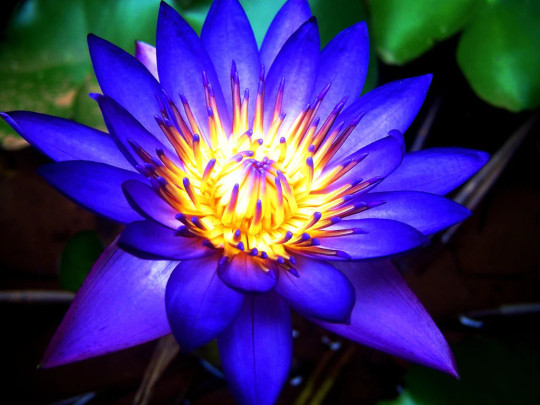
伝説のヒューマノイドたち
ヒト型爬虫類 (10)
八大龍王〜釈迦の教えに耳を傾けた龍族
彼らは、天龍八部衆に所属する龍族の八柱の王である。仏法を守護している。
仏教では、インド神話におけるナーガラジャ (ナーガの諸王の意) が、八大龍王をはじめさまざまな龍神として取り入れられた。ナーガラージャとは、冥界 (パタラ) に住む神または半神半人の蛇のような存在であるナーガ (参照) の様々な種族の王であり、時には人間の姿をとることもある超自然的な存在のこと。
ナーガ王たちの任務は、ナーガたちを率いて仏陀や他の悟りを開いた存在たちを守護し、仏陀の教えを守ることであった。
仏教経典に登場するナーガラージャの中で最も有名なものには、ヴィルパクサ、ムカリンダ、ドルタラストラ、そして以下の八大龍王たちである:
難陀 (アナンタ:歓喜の意): 難陀と跋難陀は兄弟竜王で娑伽羅 (サーガラ:大海の意) 龍王と戦ったことがあった。
跋難陀 (ウパナンダ: 亜歓喜の意): 難陀の弟。難陀竜王と共にマガダ国を保護して飢饉なからしめ、また釈迦の降生の時、雨を降らしてこれを灌ぎ、説法の会座に必ず参じ、釈迦仏入滅の後は永く仏法を守護した。
娑伽羅 (サーガラ:大海の意): 龍宮の王。大海龍王。法華経に登場する八歳の龍女はこの龍王の第三王女で「善女龍王」と呼ばれた。
和修吉 (ヴァースキ: 宝有の意):「九頭龍王」と呼ばれることもある。「九」は陽の極まりを意味し、数が非常に多く強力であることから、「九頭龍王」と考えられた。そのため、彼は「九頭の龍王」と考えられていた。元の伝説では、頭が千個あったため、稀に「多頭龍王」と呼ばれることもあった。もともとは、須弥山(参照1)を守り、細龍を捕らえて食べていた。
徳叉迦 (タクシャカ: 多舌、視毒の意): この龍が怒って凝視された時、その人は息絶えるといわれる。身延鏡と金光明経から七面天女は、この龍王の娘とされている。
阿那婆達多 (アナヴァタプタ: 清涼、無熱悩の意): ヒマラヤ山脈北部にある神話上の池、阿耨達池 (無熱悩池) に住み、四方に大河を出して人間の住む大陸 閻浮提 (えんぶだい) を潤していた。 全長800里 (約3142 km)にも及ぶ池の岸辺は金・銀などの四宝よりなっていたという。この龍王は菩薩の化身として崇められていた。
摩那斯 (マナスヴィン: 大身、大力の意): 阿修羅(参照2 & 参照3)が海水をもって喜見城を侵したとき、身をよじらせて海水を押し戻したという。喜見城とは須弥山の頂上の 忉利天にある 帝釈天 (梵: インドラ参照) の居城。
優鉢羅 (ウッパラカ: 青蓮華の意): 青蓮華龍王。青蓮華を生ずる池に住まうという。インドでは花弁や葉などの形状を比喩的に眼を現すことに用いるが、特に青睡蓮(nilotpala)は美しい眼に喩えられる。仏教では仏陀の眼は紺青色(nila)とされ、三十二相八十種好(参照4)の一つ「眼色如紺青相」となっている。
#eight dragon kings#dragon#humanoids#legendary creatures#hybrids#hybrid beasts#cryptids#therianthropy#legend#mythology#folklore#nature#art#reptilian#snake
91 notes
·
View notes
Photo

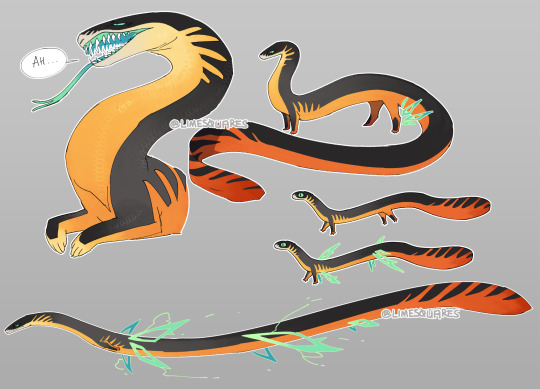
new snake just dropped 🐍
#lime art#i dont have a name for her yet...#she also has a humanoid form that im still workshopping...#but i love her very much#snakes can have a little legs as a treat#the design is loosely based on a yellow bellied sea snake! :)#sea snake oc
994 notes
·
View notes
Text

wanted to make a snakeman design based on an actual snake, so have thissssss
#he is based on an asian pit viper not sure which one tho#my art#mega man#snake man#i'm not good at drawing humanoids but i'm trying my best here :]
112 notes
·
View notes
Photo
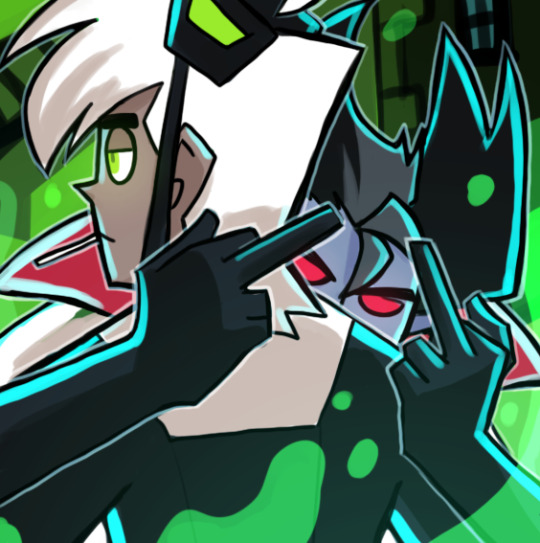
Legally a Cat
#hachi doodle#No for Real Vlad animalistic Ghost born Phase is a Snake Cat#there for his Exist certificate have him classified as a Humanoid Feline semi reptile Ghost born#I'm really digging this Skin color for Danny doe#it balance out the white way more then the old color#thus making him pop out next to vlad#Friend from the other side AU ??
233 notes
·
View notes
Text

Design i put up for Auction on Toyhouse!
Starting bid is 75$
Autobuy: 206$
Current Bid: SOLD
[Commission Prices][Etsy][Buy me a Kofi]
#adopts#adoptables#auction#body horror#candy guts#shapeshifter#creature#monster#human#humanoid#cat#dog#snake#crocodile#bird#for sale#my designs
90 notes
·
View notes
Text

Sleepy eepy rainbow noodle. Cuteness aggression is real, I want to squeeze him (lovingly)
Redrew their ref because yes B)
#art#digital art#digital illustration#procreate#artists on tumblr#oc#original character#character design#humanoid oc#oc ref sheet#monster oc#oc artwork#oc art#my art#my oc#monster original character#snake#snake oc#lgbt#nonbinary#he’s based off sunbeam snakes :)#he’s so cute#I’m going to sob#aaaaa
13 notes
·
View notes
Text


full render+bonus art that came with the candlesnake preclaim :>
27 notes
·
View notes
Text

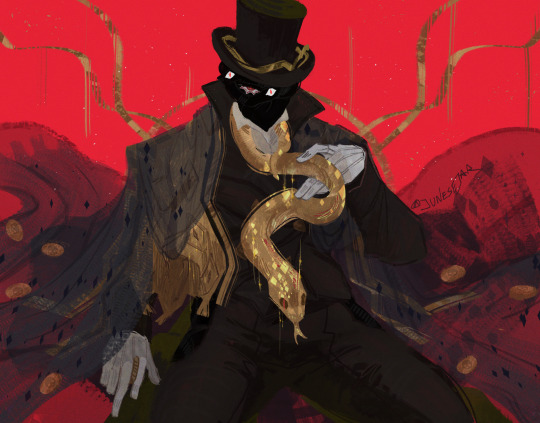
halfbod design for @ SumTrails!
#monster#snake#eerie#victorian#humanoid#character design#my art#art#went ballers on this one!!!#commission
421 notes
·
View notes
Text

Gift for Ozanthium on twitter!
#they drew me smt for christmas so I had to return the favour >:]#digital art#artists on tumblr#art#humanoid#naga#snake#cobra#fantasy#my art#art for others
73 notes
·
View notes
Text
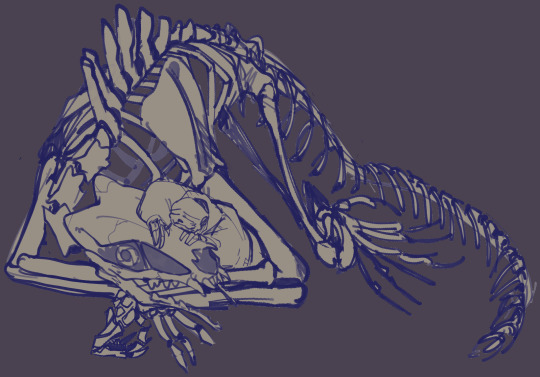
Fanart of @leshyleaf's bullet pattern birthday card AU, it's Suppper cute! check it out.
#bpbc au#bullet pattern birthday card au#undertale au#gahh I am such a fan of this papyrus design#he's Such a cutie#jbird's art#guhh. guhhh. my friend was like [haha d'you know this au? :)?] and I think?? I saw some of it#when it was first coming out#but than I forgot to keep up#and than I speed ran caughting up#and now I'm sick and ill and terribly obsessed#it's so cute :(#also I Really frankenstined togeather the papyrus' skeleton gahaha#his skull is verry doglike. but I coudnj't help myself w/ the sclerotic rings#and his hands are just. messsed up human ones. cus I Think I saw some art of papyrus as like. he's humanoid jus got some dog stuff added on#so I made sure he could stand bi-pedally [his feet are more bird like. cus I didn' wanna look up human feet and I already memorized birds]#the tail was just. is just a snake added on gahaha#sorry these tags are a MESS
96 notes
·
View notes
Text
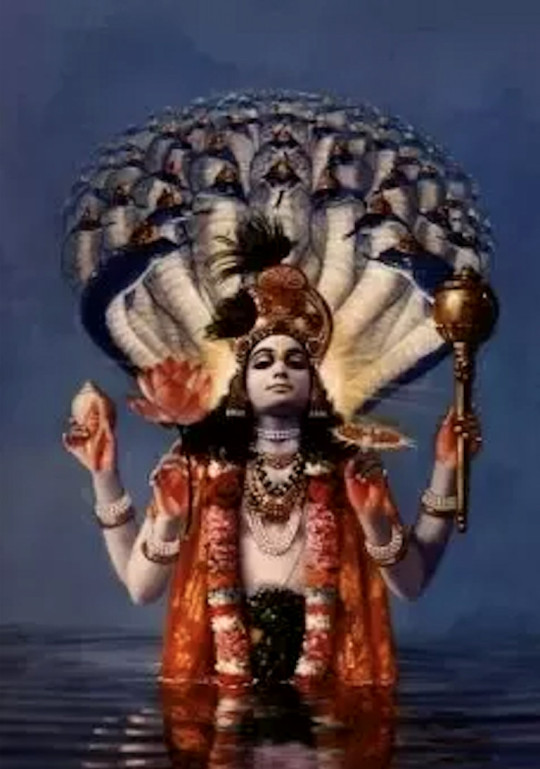
Legends of the humanoids
Reptilian humanoids (8)
Naga – Half-human, half-serpent divinities living in the underworld (Patala)
Name of a Hindu deity. Translated from Chinese as 'dragon', but originally refers to a snake, especially a cobra, as opposed to a Chinese dragon. It is assumed that snake worship already existed in the Indus civilisation. The Aryans gradually accepted the ancient worship of the snake-god and came to regard it as one of the demigods.
In Hindu literature, the Nagas, or snake people, are said to dwell in the subterranean world called Pātāla. Vāsuki and other dragon kings rule that world. At the lowest level of Pātāla dwells the primordial serpent (Shesha) Ananta, whose head supports the weight of the whole world. Nagas often appear in literary works in human form, and the dragon's daughter was described as having a very beautiful appearance.
Nagas are often mentioned in Buddhist scriptures and are one of the Eight Divisions of the Heavenly Dragon. Mahoraga, also belonging to the Eight Divisions, refers to giant serpents, but seems to refer to pythons and other serpents. In Nagaland, near the Myanmar border, there is a tribe called the Naga people, who claim to be descendants of the Naga and have preserved their own customs.
The Naga is worshipped in various Asian religious traditions and rituals dedicated to this supernatural being have been practised throughout South Asia for at least 2,000 years. They are principally depicted in three forms: as entirely human with snakes on the heads and necks, as common serpents, or as half-human, half-snake beings in Hinduism, Buddhism, and Jainism.
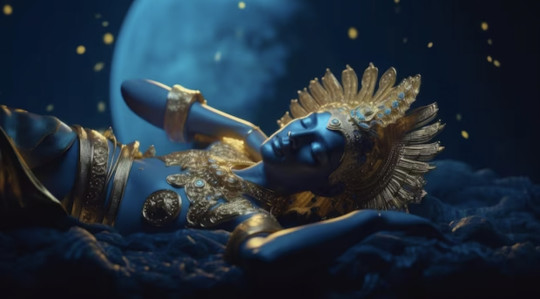
伝説のヒューマノイドたち
ヒト型爬虫類 (8)
ナーガ 〜 冥界 (パーターラ) に住む半人半蛇の神々
ヒンドゥー教の神名。「竜」と漢訳されたが,本来は中国の竜とは異なり,蛇,とくにコブラのことである。蛇神崇拝はすでにインダス文明において存在したと推測される。アーリヤ人は古来より行われた蛇神崇拝をしだいに受け入れ,半神の一つとみなすようになった。
ヒンドゥー教の文献では,ナーガすなわち蛇族は,パーターラと呼ばれる地底界に住むとされる。ヴァースキ (和修吉) その他の竜王がその世界を統治している。パーターラの最下層に原初の蛇 (梵: シェーシャ: 難陀竜王) アナンタが住み,その頭で全世界の重みを支えている。ナーガはしばしば人間の姿で文学作品に登場し,竜の娘は非常に美しい容姿をしているとされた。
ナーガは仏典においてもよく言及され,天竜八部衆の一つである。同じく八部衆に属する摩睺羅伽 (マホーラガ) は大蛇のことであるが,ニシキヘビなどの大蛇を指すようである。ミャンマー国境に近いナガランドには,ナガ族という種族が住んでいて,ナーガの末裔と称し,独自の習俗を維持している。
アジアのさまざまな宗教伝統においてナーガは崇拝され、この超自然的な存在に捧げる儀式は、少なくとも2,000年前から南アジア全域で行われてきた。ヒンドゥー教、仏教、ジャイナ教では、頭と首に蛇を持つ完全な人間、一般的な蛇、あるいは半人半蛇の存在として描かれている。
#naga#hindu gods#snake god#patala#underworld#cobra#snake people#dragon#humanoids#legendary creatures#hybrids#hybrid beasts#cryptids#therianthropy#legend#mythology#folklore#nature#art
96 notes
·
View notes
